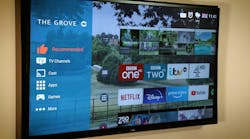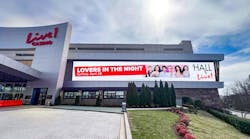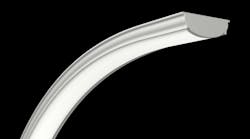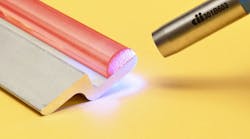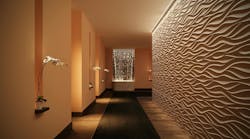The US Department of Energy (DOE) has released initial research performed under contract by RTI International that considers a new performance characteristic called LAE (lighting application efficiency) of solid-state lighting (SSL) products. One element of LAE is spectral efficiency and the RTI study focused on five commercially-available, LED-based lamps or luminaires that each integrated some technology intended to modify spectral output. Moreover, the research considered the performance of new products and measurements after rigorous AST (accelerated stress testing).
The DOE is proposing a framework for LAE that considers four aspects of SSL product performance including source efficiency or efficacy, optical efficiency, spectral efficiency, and intensity effectiveness. It’s not clear that LAE could over time be distilled into some type of easy-to-apply metric. But the concept and need for something like LAE has become increasingly important as SSL product developers and lighting designers/specifiers attempt to deliver better performance relative to an application goal, as opposed to just meeting efficacy or building power-density requirements.
The research team chose to initially focus on products that purposefully modified the spectra of the source to effect some desired outcome. Such technology, for example, is regularly used in products for lighting for health and wellbeing or human-centric lighting applications to improve alertness for people in a space or help those people sleep better at night. See our coverage of a prior Lighting for Health and Wellbeing conference for details and examples of such technology and applications.
For this initial LAE work, the DOE and partner RTI focused on spectral modification because the various techniques utilized to modify spectrum also significantly reduce efficacy. The testing would measure such reductions up front and also reveal how aging would further impact performance over time. For example, the optical efficiency of materials in lenses and diffusers drops over time.
RTI acquired a number of samples of five different SSL products that are readily available for sale. There are two retrofit or replacement lamp models represented in the research. One (referred to as MS-1 in the research) uses optical filtering in the green and yellow spectral regions to create a more uniform spectral power distribution (SPD). The second tested lamp (MS-2) utilizes LEDs with a violet emitter and green and red phosphors to eliminate blue spectral energy — presumably intended for use at night to improve sleep. We have covered such a concept in a previous article.
The third product tested (MS-3) is a linear-style LED light engine that utilizes LEDs with a violet emitter and three-phosphor mix to deliver a “sunlike” spectrum. And yes, the DOE report uses that word and makes it fairly easy to guess which LEDs are integrated in the product. Seoul Semiconductor has said that its SunLike LEDs have been shown to ease eye strain and improve sleep patterns.
The final two products are 6-in. downlight luminaires (MS-4 and -5). Both are based on two-channel LED designs with each channel having different CCTs. Such a design enables tunable output over a warm-to-cool CCT range for either ambience or lighting for health benefits. All of these SSL products would presumably improve spectral efficiency but might degrade other LAE elements.
The initial impacts of spectral modification are somewhat startling. The filtering secondary optic of MS-1 reduced lamp efficacy to 85 lm/W from 113 lm/W at the sources. The MS-2 and -3 products deliver efficacy of 49 lm/W and 68 lm/W, respectively. The research team speculated that the violet emitters used have lower wall-plug efficiency than do standard blue pumps. Plus, the report notes that the lack of blue energy in the MS-2 spectra does negatively impact color fidelity.
The AST procedures varied somewhat with the different products, but generally fell into several categories :75OL (operational life at 75°C), 7575 (operational life at 75°C and 75% humidity), and RTOL (room temperature operational life). The 75OL testing did result in chromaticity shift, especially in the MS-1 and -2 products. All of the products performed well in terms of what the researchers call LFM (lumen flux maintenance), although aging of the secondary optic in MS-1 was an issue. The 7575 testing brought a greater impact. The MS-2 and -3 products suffered significant chromaticity shift due to the impact of the environment on the phosphors.
The most significant impact on the MS-4 and -5 products was in the driver circuits. And, as usual, the culprit was a capacitor in the 7575 conditions. The MS-3 product was designed to use an external remote driver so that product was not necessarily comparable to the downlights.
Like so much DOE research, the initial LAE results perhaps bring more questions than answers. And the agency promised more tests will be coming including some performed over longer durations. The actual DOE report goes into great detail on every test performed. You can access the report on the DOE website.
For up-to-the-minute LED and SSL updates, why not follow us on Twitter? You’ll find curated content and commentary, as well as information on industry events, webcasts, and surveys on our LinkedIn Company Page and our Facebook page.


